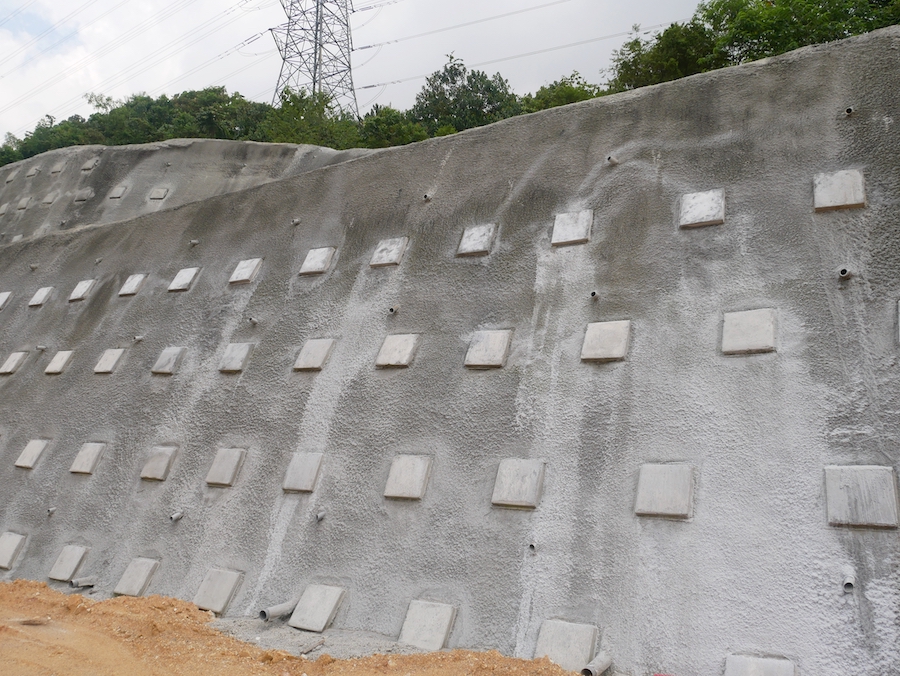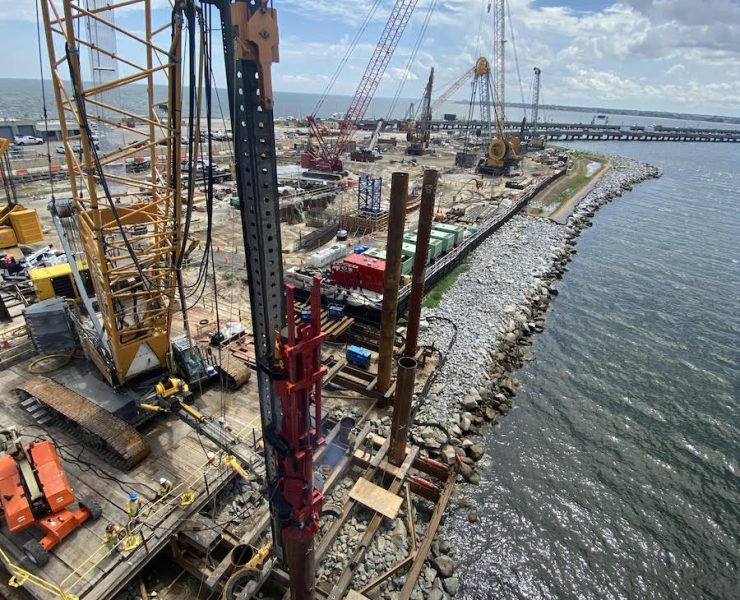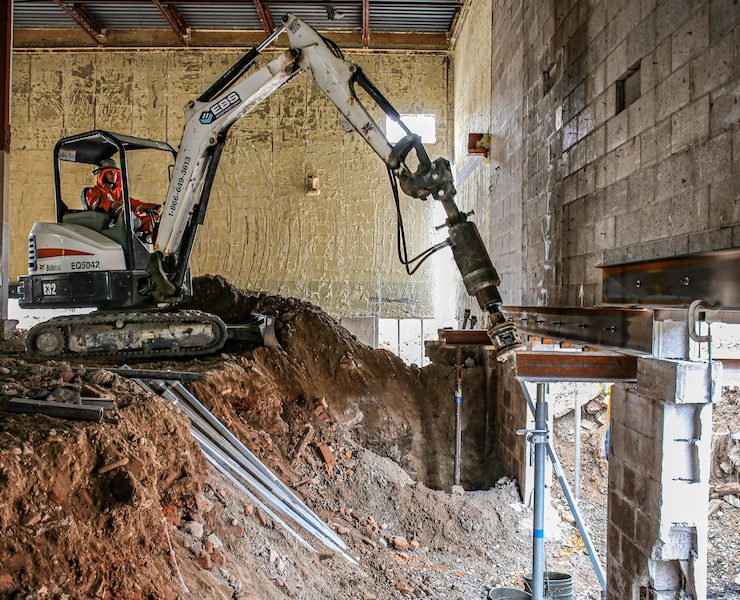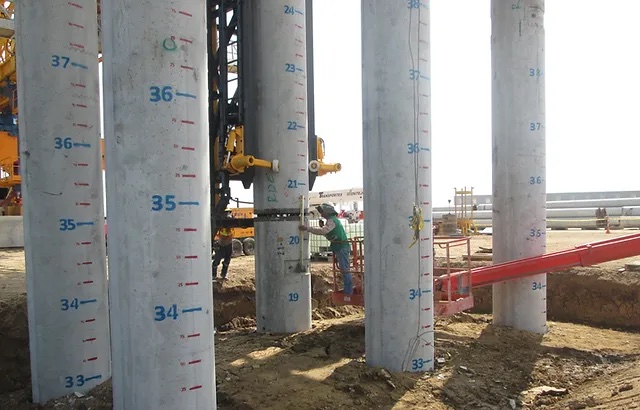Soil Nailing: Uses, Advantages, and Materials Used
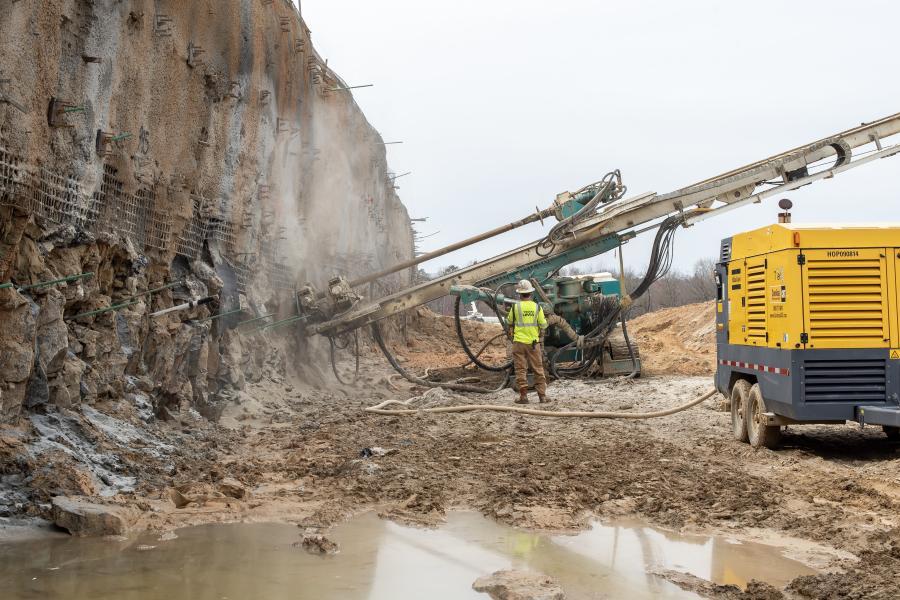
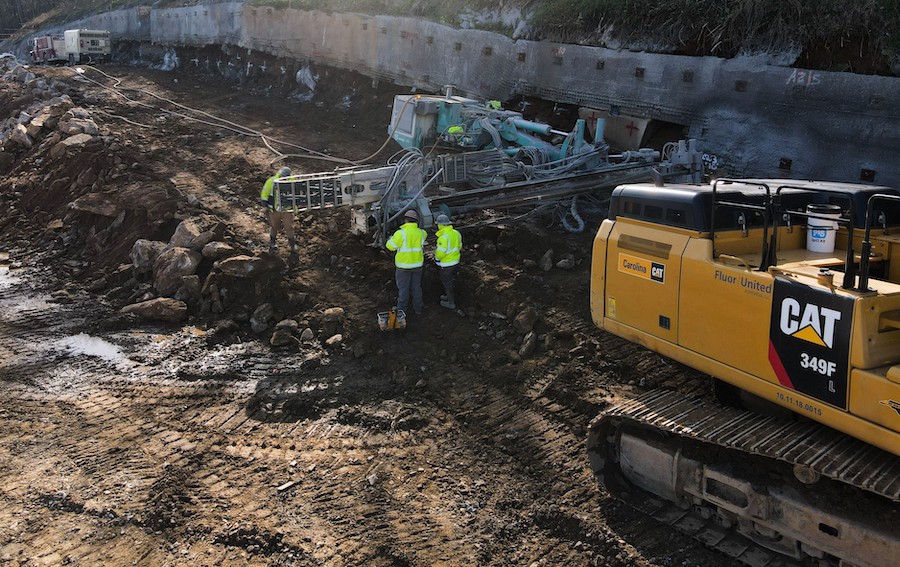
View the complete article here.
What is Soil Nailing?
Soil nailing is pretty much what it sounds like: driving massive steel “nails” into a slope horizontally to hold the soil in place. Since it requires highly skilled experts with focused training in this process along with some specialized equipment, it’s not a DIY or everyday-type project. This is the kind of build that happens when a retaining wall just won’t do it.
The process can be either temporary or permanent, depending on the project’s needs. These walls are usually built from the top down and the soil is typically dug out in up to six-foot-deep layers. After each excavation stage, holes are drilled into the exposed earth face and tension-resisting steel bars—or, the “nails”—are placed in the holes then grouted into position. A drainage system and a reinforced wall facing are then installed, while bearing plates are attached to the soil nails. This process is repeated until the full size of the sloped wall is finished, and the soil nails serve as a reinforcement to prevent any shifting or landslides.
What is Soil Nailing Used for?
Whether it’s new construction in a site with less than perfect topography or a project to “rescue” a property from encroaching earth, soil nailing is an increasingly popular option for preventing costly, even deadly landslides.
Even though they don’t make the news as much as other types of natural disasters—at least not unless there’s catastrophic loss of life—landslides are far too common. The World Health Organization estimated that just since the start of the 21st century, landslides have affected nearly five million people around the world. In the US alone, these events kill between 25 and 50 people per year and cause around $3.5 billion in damages annually.
Of course, most of these events don’t make the news because they’re just very expensive annoyances. In 2014, for example, an entire section of US Hwy 52 in Indiana was shut down due to significant shifts in the embankment that made soil nailing necessary. While no lives were lost, thankfully, for the duration of the project a typical 20-minute commute took over an hour or more.
Thanks to new techniques in slope preparation and rehabilitation, though, processes like soil nailing are reducing both the devastating effects and the mundane problems every day.

The Pros and Cons of Soil Nailing
Of course, every type of construction has its good points and its drawbacks, and soil nailing is no different.
On the plus side, it allows the natural retention of sloping earth in places where retaining walls would be too costly, too inefficient, or too dangerous to erect. Also, while heavy equipment and certified professionals are required to do it (meaning no DIY projects or subcontracting to someone who “knows a guy”), the type of equipment this calls for can easily fit in all the places where soil nailing is the best option; it can even be done from a platform suspended from a crane. That means the work can be done without the need to bring in unique teams or having to do a lot of expensive prep work to the area just to suit the equipment. Best of all, it can usually be done simultaneously with other aspects of the build rather than having to wait for this step to be completed before other work can begin.
Of course, there are some drawbacks. Again, it’s not the kind of work that just any general contractor can bid on. Also, it’s simply not feasible for places with a high water table or the wrong kind of soil, like ones that are a low cohesive or fine-grained. Even in situations where soil nailing is only supposed to be a temporary fix, it can’t be the permanent option if the soil is too porous or too expansive. Since the nails are susceptible to corrosion, that process will speed up if there’s too much moisture in the soil.
Soil Nailing vs Retaining Walls
So, why not just build a retaining wall using standard materials? There are a few reasons. First, soil nailing is a top-down process, unlike retaining walls which start at the bottom and work up as they excavate and reinforce. This means that not only does the lower level excavation not have to take place (especially helpful in soils where this kind of excavation isn’t a good option) before other work can get underway, but there’s no delay while waiting for an expensive wall to be built or the soil to be compacted if it’s too loose for a typical retaining wall.
Also, retaining walls are costly since any wall higher than four feet really needs to be reinforced. If the project requires a reinforced wall, it can be a better idea to simply reinforce the existing slope and save that extra effort and expense. If the slope in question is near a trafficked road, then soil nailing is going to mean much less delay than building up a wall.
One of the biggest advantages soil nailing has over traditional retaining walls, though, is the adaptability. It can be a small project over a short slope, a longer extension over a much farther stretch of hillside, or pretty much any other shape to the terrain.
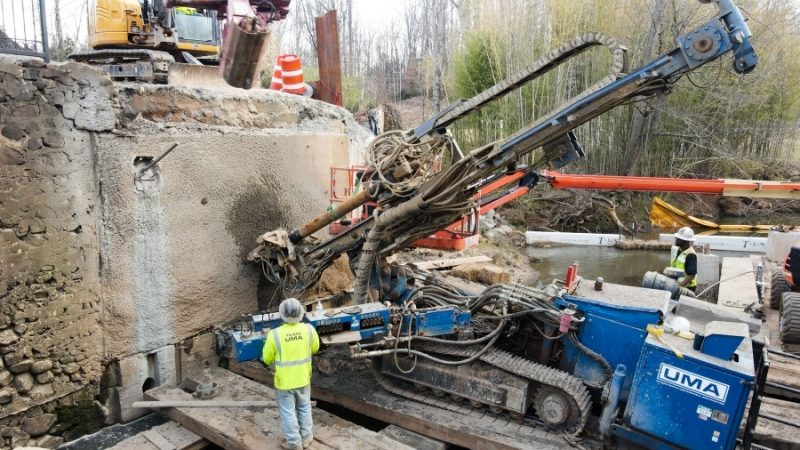
Types of Soil Nailing
Of course, soil nailing isn’t just one standard process. While the concept always involves placing the some type of nails into a slope and grouting them in place, there are different methods and materials depending on the project’s needs.
Some types of soil nailing include:
Driven
- For temporary stabilization of slopes
- Faster than other methods of retention while still allowing control over placement
- No corrosions protection for the nails
- Nailed in during excavation roughly one meter apart
- Relatively small nails compared to other methods
Self-Drilling
- Hollow bars are used instead of steel nails
- Grout is injected simultaneously for a faster process
- More resistant to corrosion due to the material
Jet Grouted
- Jets break down the soil, which makes the holes in the surface
- Steel bars are put in place and then grouted with concrete
- Provides one of the best protections against corrosion, so suitable for long-term and permanent soil nailing
Launched
- Compressed air launches steel bars into the slope
- Fast process, but less control over the angle and depth
- Ideal for reinforcing a potentially unstable soil mass around the slope since there’s no digging
New Construction and Slope Rehabilitation
One of the best features of soil nailing is that it is a highly versatile solution. Whether the demand is for new construction in a location that could be at risk for a landslide (or need expensive retention) and therefore needs to be reinforced, or there’s a need for an emergency repair to an existing area where land shift is imminent, soil nailing can be the best solution.
When the issue is slope rehabilitation, the ability to bring in small but specialized heavy equipment means it can be completed quickly and usually without damage to existing structures.
What do the Professionals Say?
Any professional will tell you that soil nailing is a great solution for an ever-present problem, but it can also be a nightmare if your contractor doesn’t know what they’re doing. One of the biggest concerns is using the wrong material for the nails themselves, which can speed up corrosion in many different types of soil.
Companies like Nucor Skyline have developed a wide range of steel materials for every different kind of project. For this kind of natural earth retention, knowing your soil and water levels will help you determine the right threaded nails to use, so it’s important to understand where you’re working.
Things to Consider
While soil nailing is a great option for a lot of landslide issues, it’s not a catch-all solution. You have to factor in things like water table depth, soil composition, moisture levels in the soil, and more before you can go this route. You also have to be able to work from the top of the slope down, which can be tricky if the ground-level soil is already giving way. The best way to figure out if soil nailing will be the best option is to call in an expert for an assessment.
View the complete article here.
What is soil nailing and its uses?
Soil nailing is a ground reinforcement technique that uses steel bars, grouted in place, to stabilize and strengthen slopes, excavations, and retaining structures. It is used in various applications, including highway and railway cuttings, landslide repair, tunnel portals, and retaining walls for both temporary and permanent support.
What are the advantages and materials used in soil nailing?
Advantages of soil nailing include cost-effectiveness, versatility, reduced environmental impact, and faster construction compared to traditional methods. Materials used in soil nailing include steel bars or rods, grout, shotcrete, drainage systems, and facing materials, such as mesh or precast concrete panels, to provide additional stability and erosion protection.














